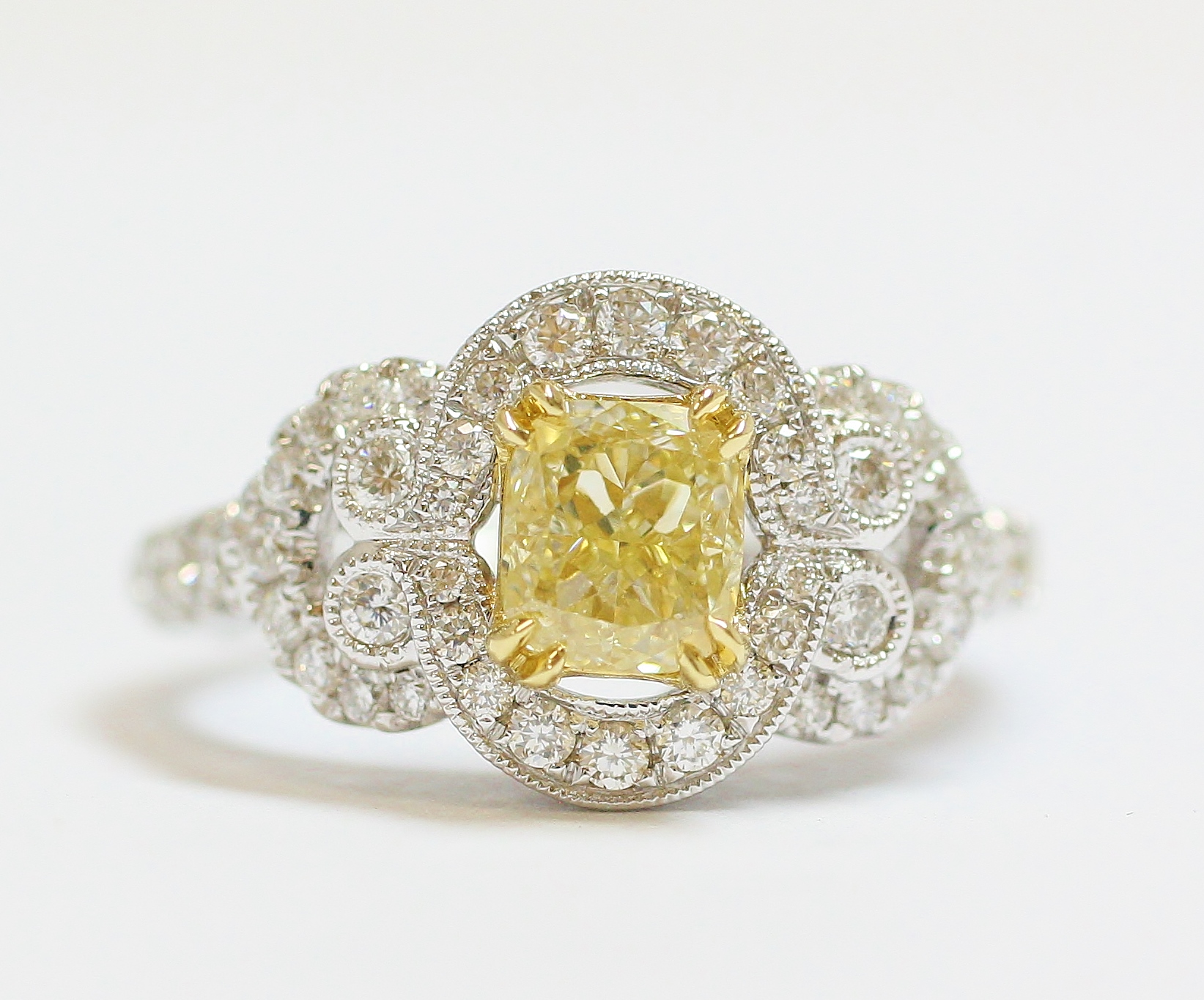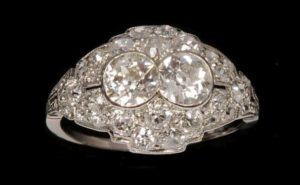 Are you thinking about selling your vintage or antique jewelry in Slidell? In this article from Slidell Jewelry Buyer, we’ll cover some of the basic issues regarding how to identify your estate jewelry, as well as how to get free help.
Are you thinking about selling your vintage or antique jewelry in Slidell? In this article from Slidell Jewelry Buyer, we’ll cover some of the basic issues regarding how to identify your estate jewelry, as well as how to get free help.
When referring to jewelry, the terms “estate,” “vintage,” and “antique” all have related meanings. The differences can greatly affect the value of the piece, so it is important to understand the terminology.
Although estate jewelry can suggest a piece that has been passed down through a previous generation’s estate, it more generally refers to any piece of jewelry that has been previously owned, regardless of age. Generally speaking, there are three types of Slidell estate jewelry: antique, vintage, and contemporary. Antique is older than 100 years; vintage is older than 40 years; and contemporary is 1980s till the present.
Identifying antique and vintage jewelry can be a challenge, and sometimes only an expert can make a final determination. But there are a few ways to become more proficient at dating and identifying old jewelry, and in the following article, the staff at Slidell Jewelry Buyer will share a few of the most accessible methods.
How to Identify Vintage & Antique Jewelry by Style in Slidell
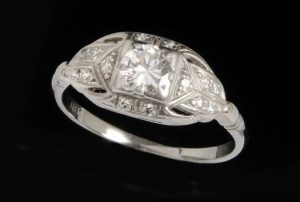 Jewelry is like anything else in fashion, and reflects popular styles, designs, and colors—even the preferred stones change from era to era. For example, the jewelry of the Edwardian period marked the beginning of the use of platinum, and elaborate, delicate filigree work is highlighted in pieces featuring diamonds, colored stones, and pearls.
Jewelry is like anything else in fashion, and reflects popular styles, designs, and colors—even the preferred stones change from era to era. For example, the jewelry of the Edwardian period marked the beginning of the use of platinum, and elaborate, delicate filigree work is highlighted in pieces featuring diamonds, colored stones, and pearls.
Jewelry from the Art Nouveau period features flowing and curving designs, such as women with flowing hair, animals, insects, and flowers—whereas Art Deco jewelry features abstract geometric forms (see photo of bracelet above). Art Deco jewelry’s dominant usage of platinum and white gold was replaced by pink and rose gold during the Retro period, when rubies became the most popular stone.
Learning the styles of different eras in the history of jewelry can be complicated, so you will need to do some homework. The difference between a Victorian brooch and an Art Deco bracelet might be obvious, but to know what time period a piece comes from takes a bit of specialized knowledge. One way to learn is to watch eBay. Not only can you learn about different styles and periods, but you can begin to get an idea of the market value of some vintage and antique jewelry.
While there are many reference books and websites that can help increase your knowledge base, there’s really nothing like the real thing when it comes to identifying jewelry. Slidell museums and antique malls are great places to see jewelry from different eras.
Also, try to find reputable Slidell dealers and see what they have to offer. Ask questions–many dealers are passionate about jewelry and are happy to help you learn. Remember though that styles overlap, and motifs tend to recur, so style alone is only one clue to consider when trying to identify a piece.
How to Use Fitting & Findings to Identify Slidell Estate Jewelry
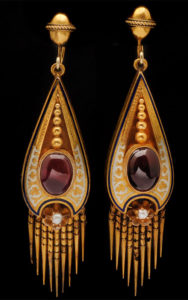 Jewelry findings are ready made parts used to join jewelry components together or attach a piece to the wearer. Findings include clasps, pin stems, hinges, ear wires, ring blanks and the like. Fittings refer to these same parts, but are custom made for a piece. Fittings and findings evolved over time, and a knowledge of what sorts of components were popular during a certain era can help identify an antique or vintage piece in Slidell.
Jewelry findings are ready made parts used to join jewelry components together or attach a piece to the wearer. Findings include clasps, pin stems, hinges, ear wires, ring blanks and the like. Fittings refer to these same parts, but are custom made for a piece. Fittings and findings evolved over time, and a knowledge of what sorts of components were popular during a certain era can help identify an antique or vintage piece in Slidell.
Earring clasps are particularly useful for dating purposes, as their evolution is well documented. The screw back clasp for pierced ears first appeared in the 1890s, but the post and butterfly clasp didn’t appear until the 1920s and the omega back not until 1960. Some older style clasps are still used today, though their shapes have been modified in modern earrings.
Fittings and findings on brooches also changed over time, and can provide clues about the piece. Tube hinges are older than ball hinges, for example, and the C clasp is older than a safety clasp. If the pin shaft extends out beyond the edge of the brooch, it is likely to be a piece from the mid-1800s.
Sometimes clasps were modified or replaced. The most common modification was to have a C clasp replaced with a safety clasp. Such changes to the original jewelry can greatly reduce the value of the piece in Slidell.
Identifying Vintage & Antique Jewelry by Hallmark in Slidell
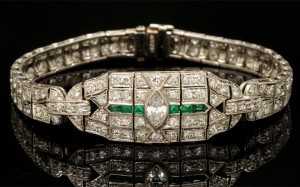 Hallmarks are stamps or marks on jewelry that can include purity marks and maker’s marks, as well as other marks indicating retailers, designers, and even patent and inventory information.
Hallmarks are stamps or marks on jewelry that can include purity marks and maker’s marks, as well as other marks indicating retailers, designers, and even patent and inventory information.
A comprehensive study of jewelry hallmarks could fill a small library, but an amateur can use hallmarks to learn a few things about a particular piece of jewelry in Slidell.
Hallmarks are generally hidden in places like the back of a brooch, the inside of a shank on a ring, or on the inside back of an earring. You will most likely need to use a jeweler’s loupe to find them, and plenty of patience. Once you find a mark on your jewelry, what does it mean?
The most common hallmark is a purity mark, which is an indication not only of what kind of metal your piece is made of, but the relative purity of the metal itself. A mark of “925” indicates sterling silver, which is 92.5% pure. Up until the 1940s however, sterling silver jewelry was usually stamped with “Sterling,” “Ster,” or “STG.”
Gold jewelry may be marked with numbers indicating purity in karats, such as “18K” or the European equivalent “750.” A gold purity mark of “ct” indicates a piece was made in Great Britain.
Maker’s marks, often called “signatures,” can be a great asset when trying to date a piece of vintage jewelry as many companies changed their signatures over time. Jewelry made in the United States before 1955 was patented to protect the design, and may have a patent number or “Pat Pending” mark in addition to the manufacturer’s name. After the law changed, jewelry items were copyrighted and you might find a © along with the name of the manufacturer.
If your piece has a patent number, it’s fairly easy to look up the item on the United States Patent and Trademark Office website. Bear in mind though that jewelry manufacturers also patented clips, clasps, and other mechanisms, and they continue to do so today. Therefore, assuming that a patent number means the piece was produced before 1955 can be incorrect. So you need to be diligent when using signatures and patent numbers to identify your jewelry.
If you are selling your antique or vintage jewelry and need help identifying your items, contact Slidell Jewelry Buyer today for a free appraisal and generous cash offer.
Call (985) 206-8010
To get experts answers to common questions that arise when selling diamond ring and jewelry, please check out our article: How to Sell My Diamond Jewelry in Slidell.

